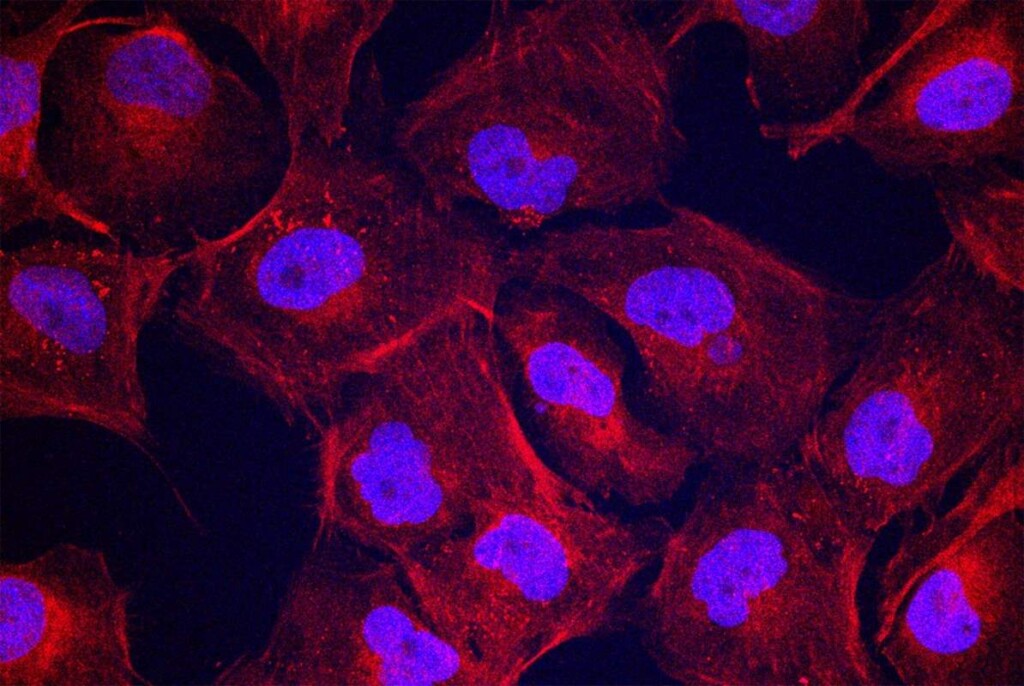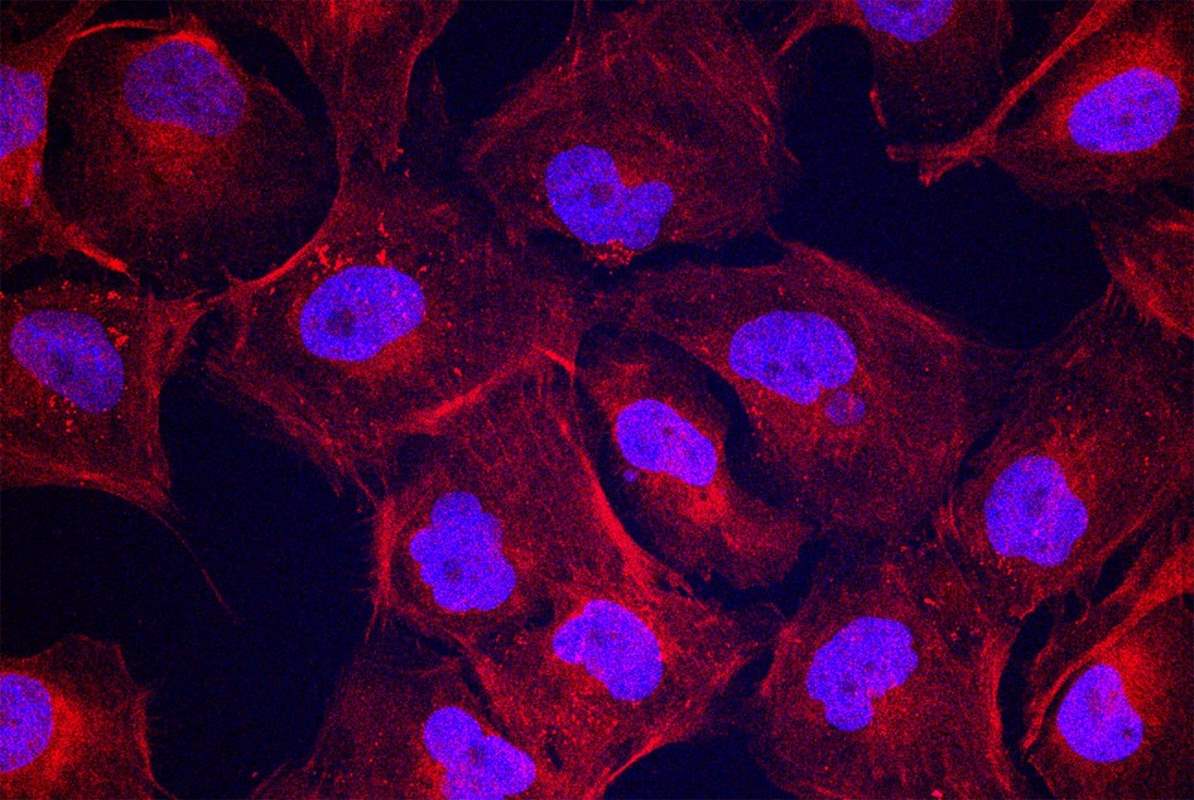
A team at Northwestern University has come up with the term “dancing molecules” to describe an invention of synthetic nanofibers which they say have the potential to quicken the regeneration of cartilage damage beyond what our body is capable of.
The moniker was coined back in November 2021, when the same team introduced an injection of these molecules to repair tissues and reverse paralysis after severe spinal cord injuries in mice.
Now they’ve applied the same therapeutic strategy to damaged human cartilage cells. In a new study, published in the Journal of the American Chemical Society, the treatment activated the gene expression necessary to regenerate cartilage within just four hours.
And, after only three days, the human cells produced protein components needed for cartilage regeneration, something humans can’t do in adulthood.
The conceptual mechanisms of the dancing molecules work through cellular receptors located on the exterior of the cell membrane. These receptors are the gateways for thousands of compounds that run a myriad of processes in biology, but they exist in dense crowds constantly moving about on the cell membrane.
The dancing molecules quickly form synthetic nanofibers that move according to their chemical structure. They mimic the extracellular matrix of the surrounding tissue, and by ‘dancing’ these fibers can keep up with the movement of the cell receptors. By adding biological signaling receptors, the whole assemblage can functionally move and communicate with cells like natural biology.
“Cellular receptors constantly move around,” said Northwestern Professor of Materials Sciences Samuel Stupp, who led the study. “By making our molecules move, ‘dance’ or even leap temporarily out of these structures, known as supramolecular polymers, they are able to connect more effectively with receptors.”
The target of their work is the nearly 530 million people around the globe living with osteoarthritis, a degenerative disease in which tissues in joints break down over time, resulting in one of the most common forms of morbidity and disability.
“Current treatments aim to slow disease progression or postpone inevitable joint replacement,” Stupp said. “There are no regenerative options because humans do not have an inherent capacity to regenerate cartilage in adulthood.”
In the new study, Stupp and his team looked to the receptors for a specific protein critical for cartilage formation and maintenance. To target this receptor, the team developed a new circular peptide that mimics the bioactive signal of the protein, which is called transforming growth factor beta-1 (TGFb-1).
Northwestern U. Press then reported that the researchers incorporated this peptide into two different molecules that interact to form supramolecular polymers in water, each with the same ability to mimic TGFb-1.
The researchers designed one supramolecular polymer with a special structure that enabled its molecules to move more freely within the large assemblies. The other supramolecular polymer, however, restricted molecular movement.
ALSO EXCITING: How Lizards Regenerate their Tails Could Lead to Arthritis Treatments: Key Cartilage Cells Identified
“We wanted to modify the structure in order to compare two systems that differ in the extent of their motion,” Stupp said. “The intensity of supramolecular motion in one is much greater than the motion in the other one.”
Although both polymers mimicked the signal to activate the TGFb-1 receptor, the polymer with rapidly moving molecules was much more effective. In some ways, they were even more effective than the protein that activates the TGFb-1 receptor in nature.
“After three days, the human cells exposed to the long assemblies of more mobile molecules produced greater amounts of the protein components necessary for cartilage regeneration,” Stupp said.
MORE ARTHRITIS BREAKTHROUGHS: New Nanoparticle Treatment Could Ease Arthritis Pain Following Breakthrough Research in Mice
“With the success of the study in human cartilage cells, we predict that cartilage regeneration will be greatly enhanced when used in highly translational pre-clinical models,” Stupp said. “It should develop into a novel bioactive material for regeneration of cartilage tissue in joints.”
“We are beginning to see the tremendous breadth of conditions that this fundamental discovery on ‘dancing molecules’ could apply to,” Stupp said. “Controlling supramolecular motion through chemical design appears to be a powerful tool to increase efficacy for a range of regenerative therapies.”
SHARE This Complex But Nevertheless Important Breakthrough In Material Medicine…




















